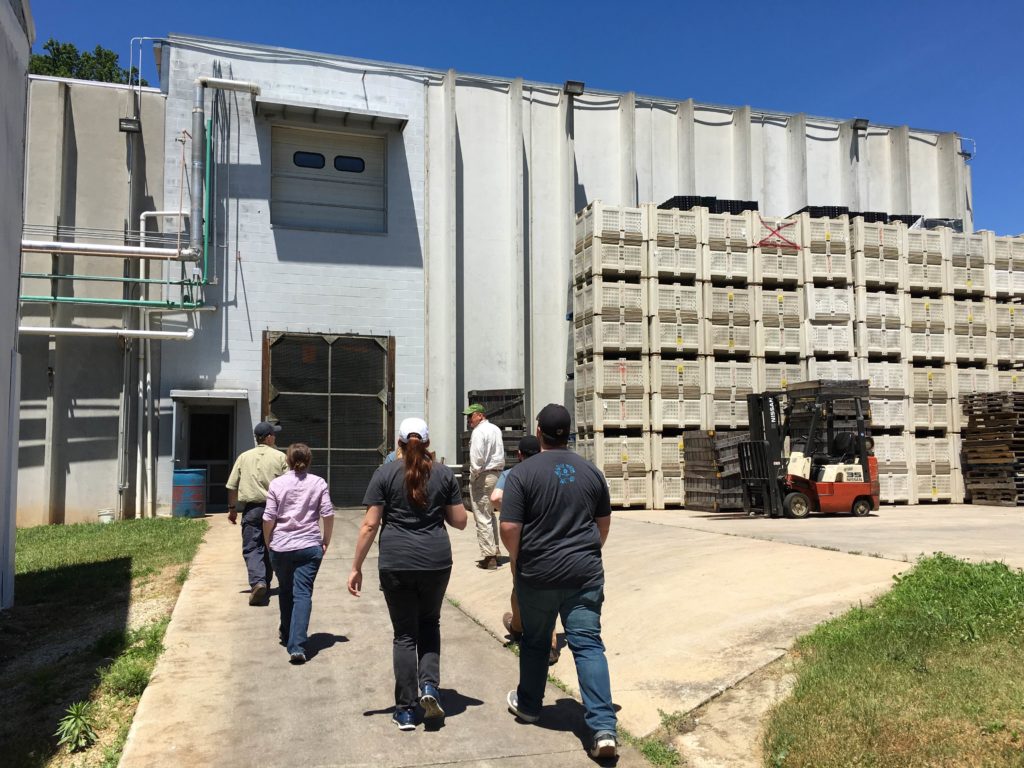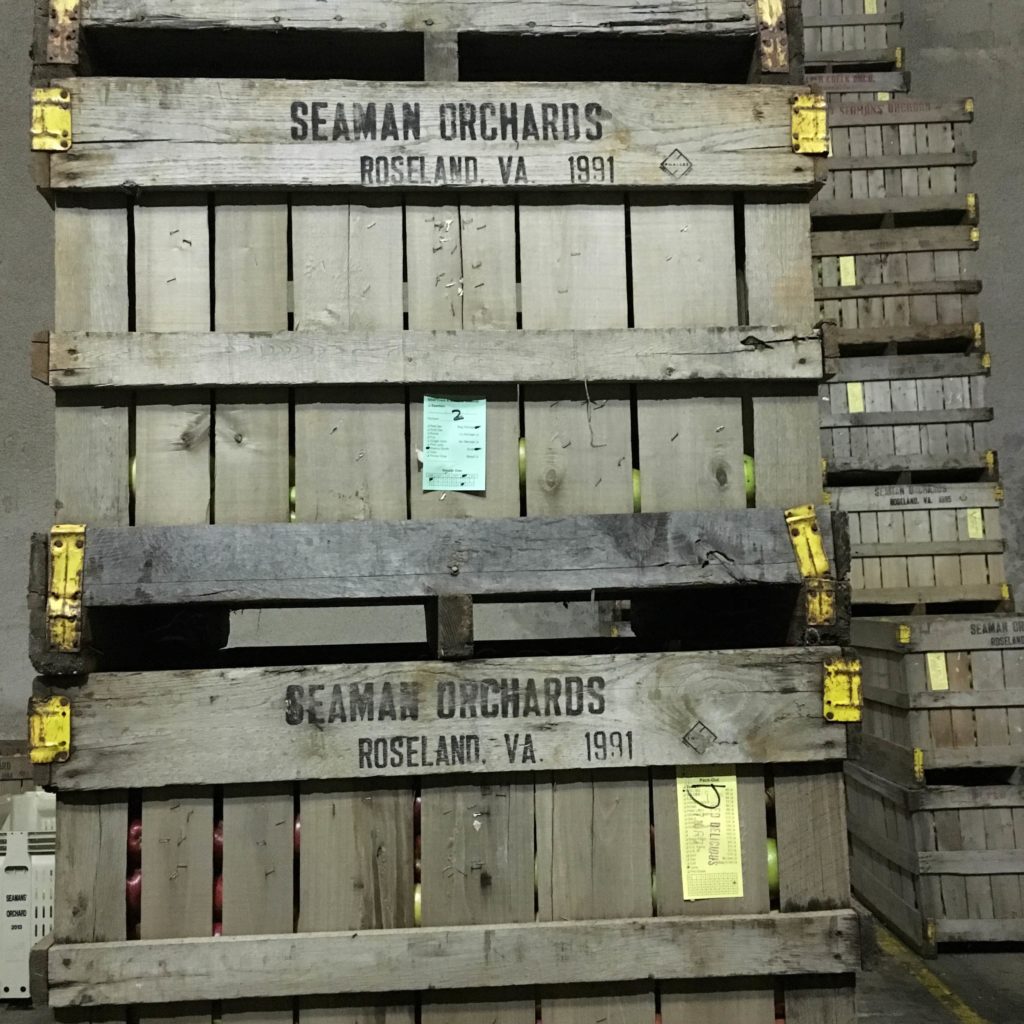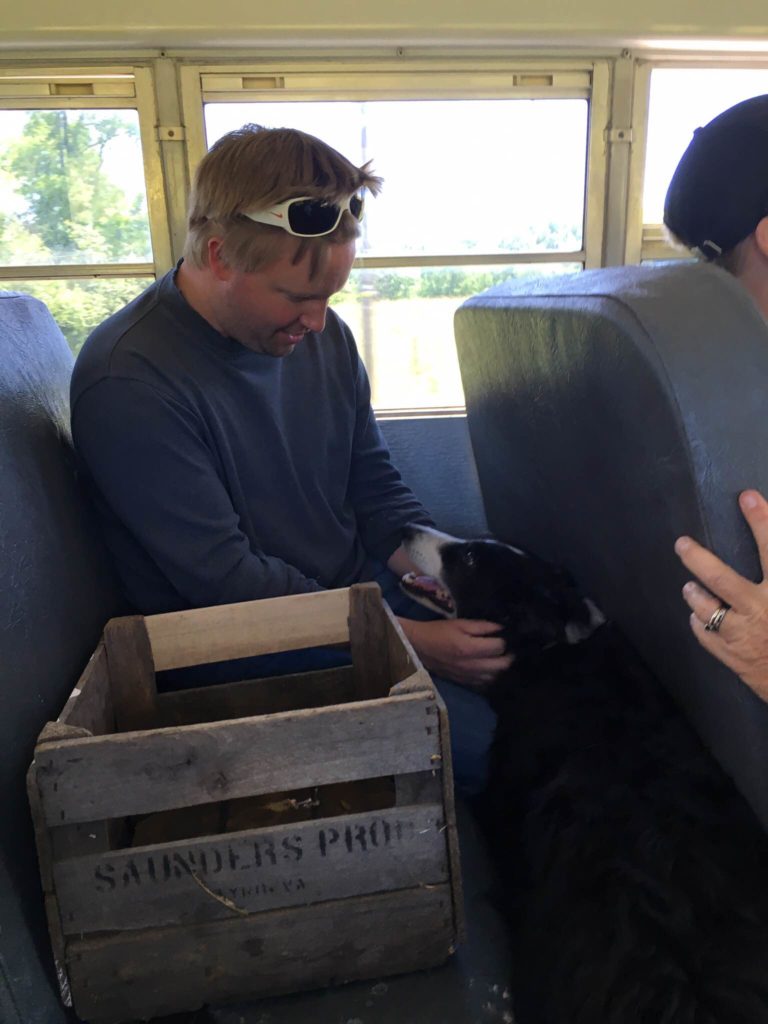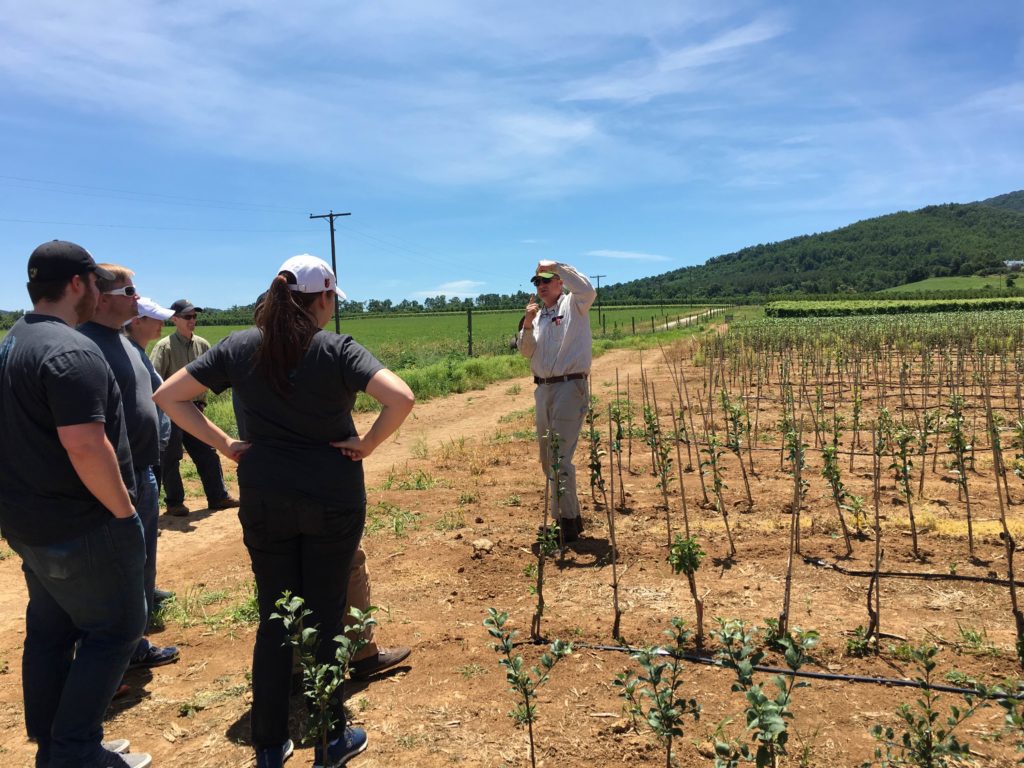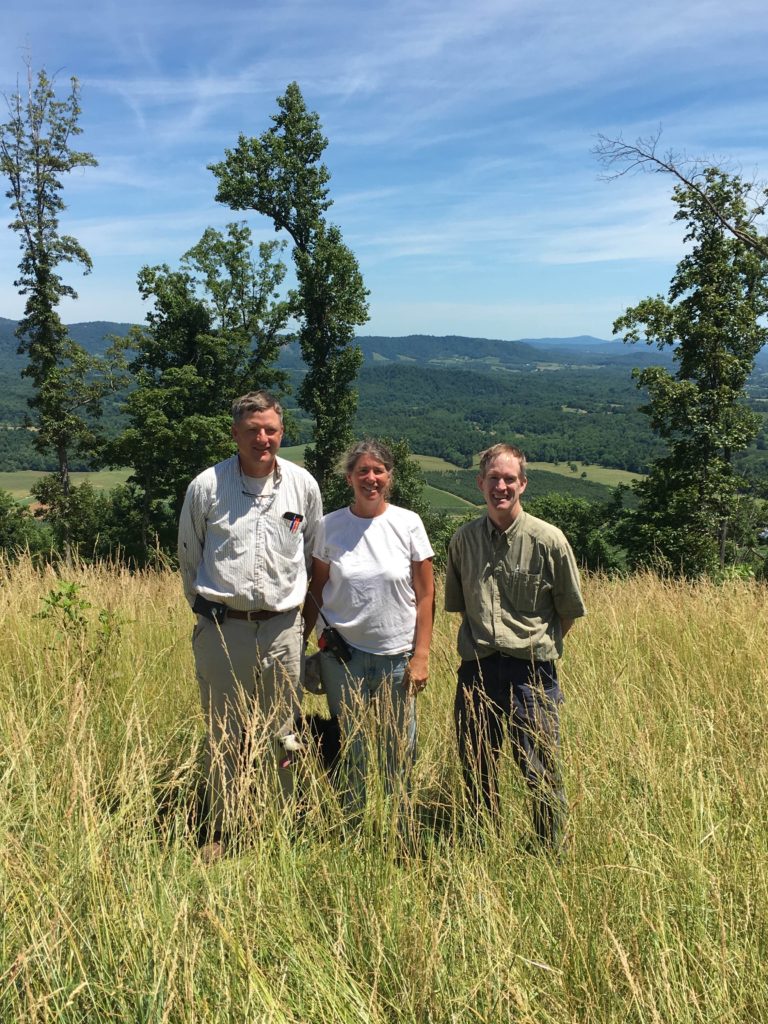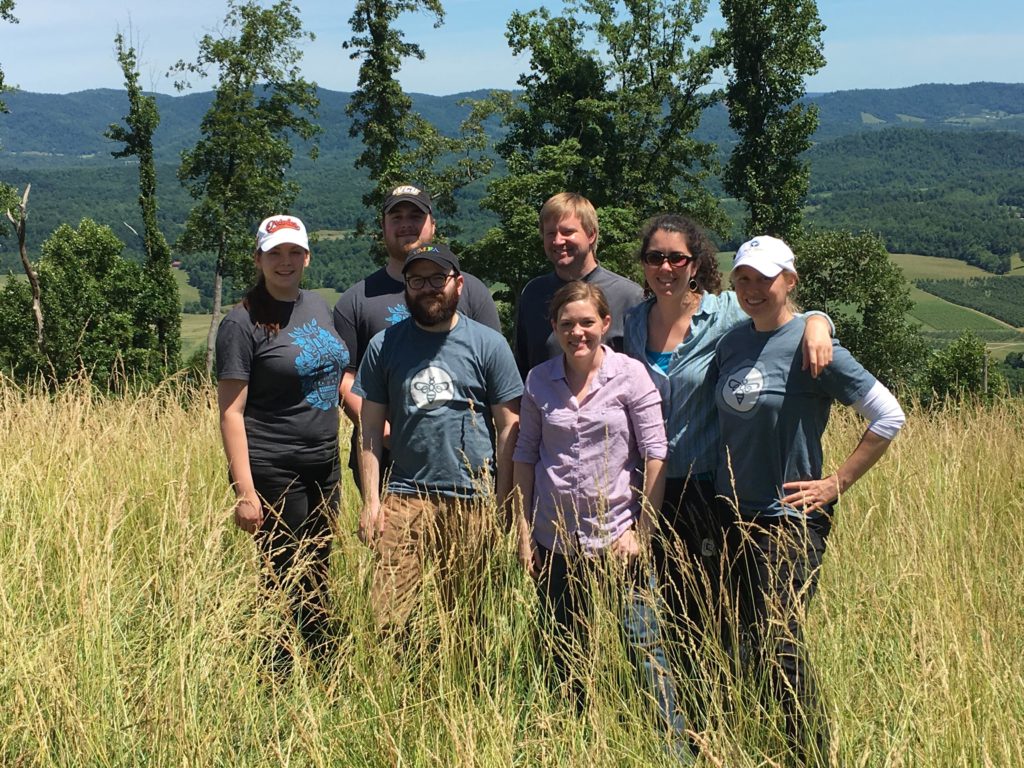Like most small businesses, Blue Bee Cider wouldn’t be what it is today without the support and energy of many people. In the tasting room, we get the occasional question about where we source our apples, but it is a rare, almost never-occurring thing to have questions about the hands that grow the apples for our cider. This post highlights a few of our most important partners, the people growing our ingredients in Virginia’s apple country.
This summer on a sunny, typical humid morning in Richmond, our staff climbed into the rental van with travel coffee mugs, the requisite iPod cables, and a double chocolate cake (made by Courtney). There was the normal joking around and passionate debate about a bevy of topics, including a lengthy reverie about lunch meat preferences. When we encountered a soda machine when we stopped for gas that had all of the choices marked as “Surprise,” Taylor put in a few quarters, but it turns out the only surprise was that the machine didn’t work. After about two hours of driving, we reached our first destination: Seaman’s Orchard at the foot of the Blue Ridge Mountains, not far from Skyline Drive.
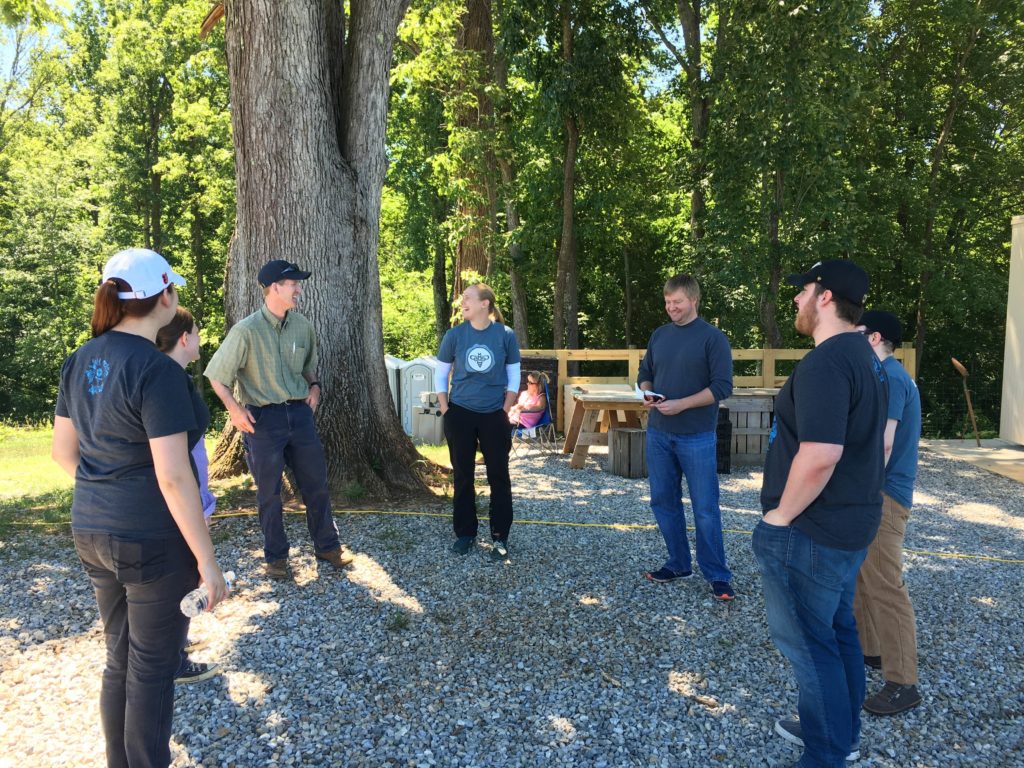
Carter Parr met us and, after a brief greeting, showed us the mulberry trees where we had hoped to pick several buckets for our Fanfare cider. However, much to our chagrin, the trees had only a moderate amount of berries at various states of ripeness and we were only able to pick a few handfuls. The late frost this spring has created problems for mulberry trees throughout the region, causing the first blooms of berries to drop prematurely and the second bloom to come in smaller or not at all. But all was not lost. Right next to this stand of mulberry trees, Carter showed us the new acres of Summer Rambo apples planted this spring to help expand our production of one of our most popular ciders, Mill Race Bramble.
Not to be discouraged, we loaded our scant pickings into the back of the van and headed out to a neighboring partner orchard, Silver Creek. There, John and Ruth Saunders met our crew and took us on a tour of the Silver Creek & Seaman’s Orchards apple storage and production facility they co-run with Seaman’s. As she shook our hands, Ruth smiled and asked how we each were doing, thanking us for taking time out to come spend the day with them. “Ya’ll know we call you the ‘busy bees’, right?” she laughed.
We walked through the packing shed, where apples are sorted for sale to grocery stores or for juice and cider, and the new cider room with a bladder press and UV machine for jug cider. We then got to tour the cold storage buildings that were built in the 1960s. My favorite feature was the small metals doors with porthole windows that workers use to enter and exit the rooms and keep the temperature moderated rather than having the large garage doors opened for each check on the apples. About 2500 bushels of apples can be stored in each of the warehouse’s three rooms and crates are stacked and organized by apple variety. During apple harvest season, this area is one of the first to market in the country, only three days behind Georgia and around the same time as Anderson, North Carolina, home to one of the Southeast’s largest apple-producing areas.
After the tour, we gathered around picnic tables in the front room of the packing shed and sat down to a quick but delicious lunch of fried chicken, potato and bean salads, watermelon, and chocolate cake. Full and happy, we clambered into a small white school bus and set off for a drive around the farm’s more than 1000 acres, with a short stop to pick up Ruth’s border collie, Annabelle.
The Silver Creek Farm is impressive, to say the least, with approximately 600 acres of pasture for livestock and fields for crops like sweet corn, 250 acres of apple orchards with about 25 different varieties, and 70 acres of vineyards. We stopped several times along the way, to look up close at the small but growing Ashmead’s Kernal apples, young root stocks for next year’s crops, and trees heavy with juicy white and golden peaches.
Carter and John are third and fourth generations of the Silver Creek and Seaman’s Orchards’ founding families, dating back to 1954 and 1933, respectively. They both run pick-your-own operations in addition to their own production schedule, and they partner with local companies to produce jams, jellies, sauces, and spreads with their apples and other produce.
Together with Ruth, Carter and John took turns pointing out different features of the farm that kept it productive and healthy, including the natural ponds staggered across the mountainside that created the perfect setup for trickle irrigation, using the natural gravity created by planting downhill from the ponds. They explained how new distances are being used between planted rows of apple trees to maximize production while maintaining a manageable density and how the weight created by young apples will naturally pull the branches down and apart, providing more room and sunlight to grow. We also saw large brush piles from apple trees of constantly-shifting, less-popular apple varieties that would either be burned or chipped and sold, a result of ever-changing market demands and expectations.
Throughout the day, we shared the road with tractors loaded down with hay, made a brief stop so John could flag down and direct a truck delivering gravel, and passed workers picking and tending to crops. There’s no doubt that there is never a still moment here. But as John stated as we pulled back up to the packing shed and he pulled a walkie talkie out of his pocket, “it’s been radio silence for most of the trip, meaning no trouble. Now that’s a mark of a good day.”
-Nicole Martorana
